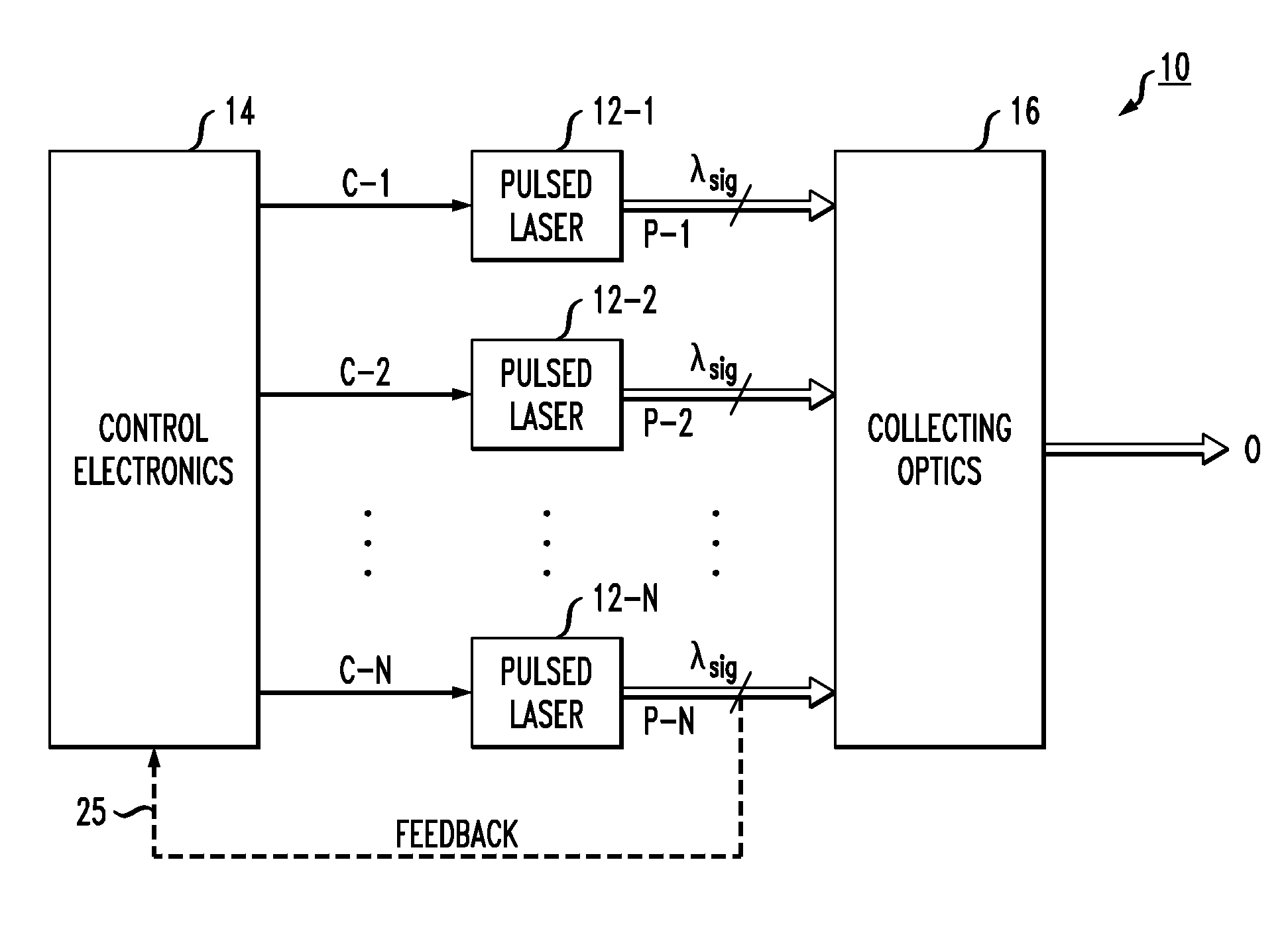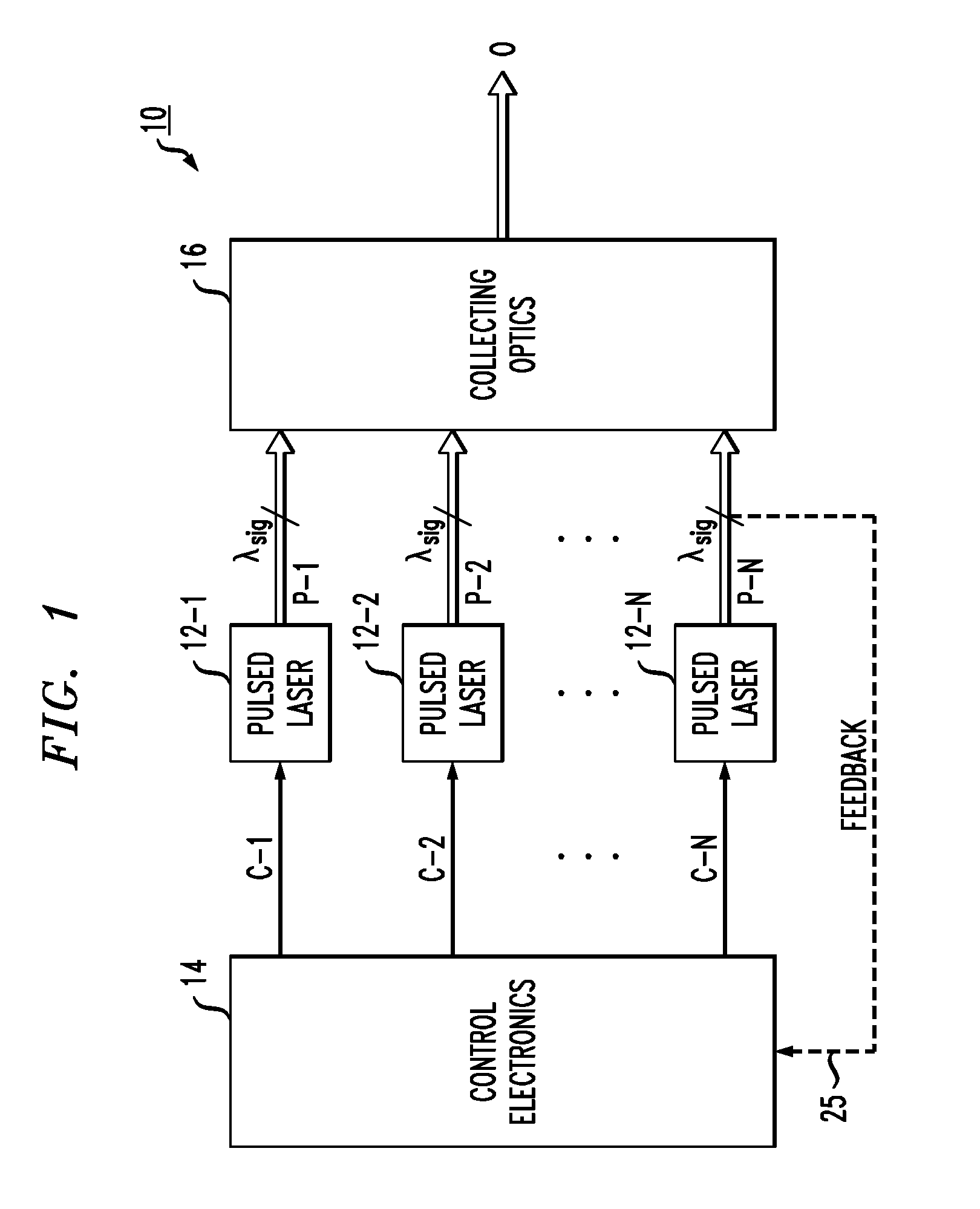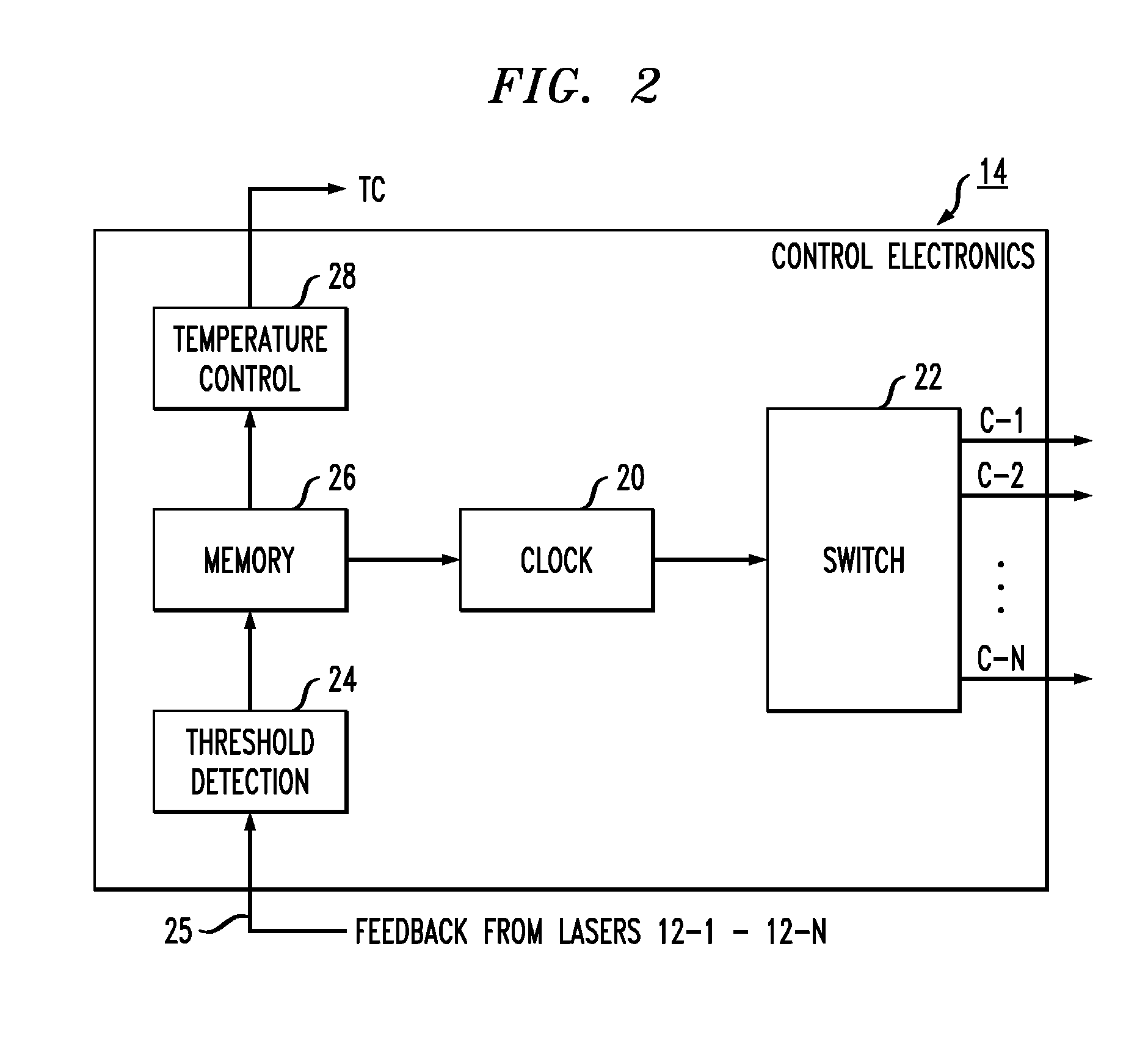Pseudo-CW Quantum Cascade Laser System
a quantum cascade laser and quantum cascade technology, applied in the field of laser systems, can solve the problems of limiting the usefulness of qc lasers in these applications, low efficiency, and only 1% efficiency of qc lasers, and achieves high overall wall-plug efficiency, lower duty cycle, and high efficiency.
- Summary
- Abstract
- Description
- Claims
- Application Information
AI Technical Summary
Benefits of technology
Problems solved by technology
Method used
Image
Examples
Embodiment Construction
[0024]FIG. 1 is a simplified block diagram of an exemplary laser system 10 formed in accordance with the present invention. As shown, system 10 comprises a plurality of N lasers 12, where N 2. As mentioned above, each laser 12-i may be separately packaged, or groups of the lasers may each be mounted on a separate substrate, or the entire plurality of lasers may be formed as a monolithic structure on a single substrate. Importantly, each laser operates at essentially the same wavelength λsig, so that the output pulses from each separate laser may be combined to form the desired pseudo-CW output signal. As mentioned above, the operating wavelength of the plurality of lasers 12 may also be tunable, providing a pseudo-CW output signal at any desired wavelength over, for example, the mid-IR wavelength range.
[0025]Also shown in FIG. 1 is control electronics 14, which is used to control the operation of each of the separate lasers forming the plurality of N lasers 12. A separate control si...
PUM
 Login to View More
Login to View More Abstract
Description
Claims
Application Information
 Login to View More
Login to View More - R&D
- Intellectual Property
- Life Sciences
- Materials
- Tech Scout
- Unparalleled Data Quality
- Higher Quality Content
- 60% Fewer Hallucinations
Browse by: Latest US Patents, China's latest patents, Technical Efficacy Thesaurus, Application Domain, Technology Topic, Popular Technical Reports.
© 2025 PatSnap. All rights reserved.Legal|Privacy policy|Modern Slavery Act Transparency Statement|Sitemap|About US| Contact US: help@patsnap.com



